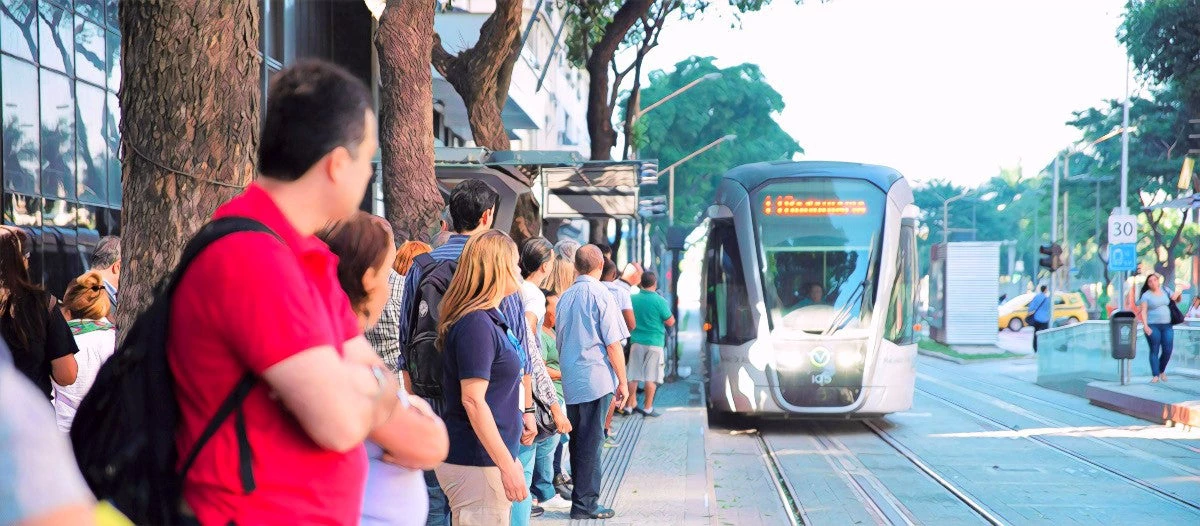 Light Rail Transit in Rio de Janeiro | Image: World Resources Institute/Mariana Gil
Light Rail Transit in Rio de Janeiro | Image: World Resources Institute/Mariana Gil
Avoid, shift, improve, strengthen. Four short verbs that sum up a new approach to rising demand for mobility and climate action.
Transport accounts for 20% of the world’s greenhouse gas emissions and, with urbanization and motorization on the rise in developing countries, this could grow to 60% by 2050.
The World Bank Group is working on ways to break the link between mobility and harmful emissions . A new initiative, the Global Facility to Decarbonize Transport (GFDT), is designed to accelerate investments and innovation toward climate-smart transport, so that countries do not have to choose between development and climate action.
GFDT will support the transition of developing countries toward greener, more sustainable transport by helping:
- Avoid motorized transport where possible.
- Shift passenger and freight traffic to cleaner modes.
- Improve the efficiency of transport vehicles and operations with new technology.
And, in the longer run:
- Strengthen transport systems to enhance resilience.
GFDT will focus on practical solutions backed by solid evidence and data. It will invest in pilot projects with measurable climate benefits that use innovative technology. It will invest, plan, and design projects that target a country’s specific challenges and solutions. And it will build capacity in client countries by helping modernize policies, regulations, and institutions to create more resources for low-carbon transport.
The World Bank Group has a track record of innovative projects around the globe, which GFDT will build on. For example, in Abidjan, Cote d’Ivoire, the World Bank is working on a new Bus Rapid Transit system that will connect residents to 600,000 jobs and lower the time and cost of transit. In Dakar, Senegal, a similar BRT project will save 434,000 tons of GHG emissions and make 120,000 jobs accessible to low-income residents. In Quito, Ecuador, the World Bank co-financed a new metro system that will move up to 400,000 passengers daily. And in Egypt, a World Bank project helped recycle 45,000 "clunker" taxis, reducing GHG emissions by 310,000 tons of CO2 between 2013 and 2017.
GFDT will look for similar opportunities, especially in places where countries need guidance getting these types of projects off the ground. It will conduct research and analytical work to help governments prepare bankable, high-impact projects. It will also complement traditional World Bank financing to pilot a new generation of climate-smart transport programs, with a focus on innovative solutions. These solutions could not happen without GFDT support.
We have a short window of opportunity to take on the rising emissions from transport, before low and middle-income countries turn to private cars and urban sprawl leads to longer travel. But this requires a much higher level of ambition. The World Bank estimates that the annual transport infrastructure financing gap could be as much at $944 billion a year through 2030. This dwarfs traditional sources of funding. And this is where the GFDT fits in: one of the key objectives of the new facility is to help developing countries create the conditions that will attract more investors and mobilize adequate resources for climate-smart transport. So far, the GFDT has received initial funding from Germany, Luxembourg, the Netherlands, and the United Kingdom.
GFDT plans to kick off its first set of projects and announce more donors this year. The time is now. The pressing need for both climate action and better mobility for all are on a collision course, and transport is at the center of it.


Join the Conversation